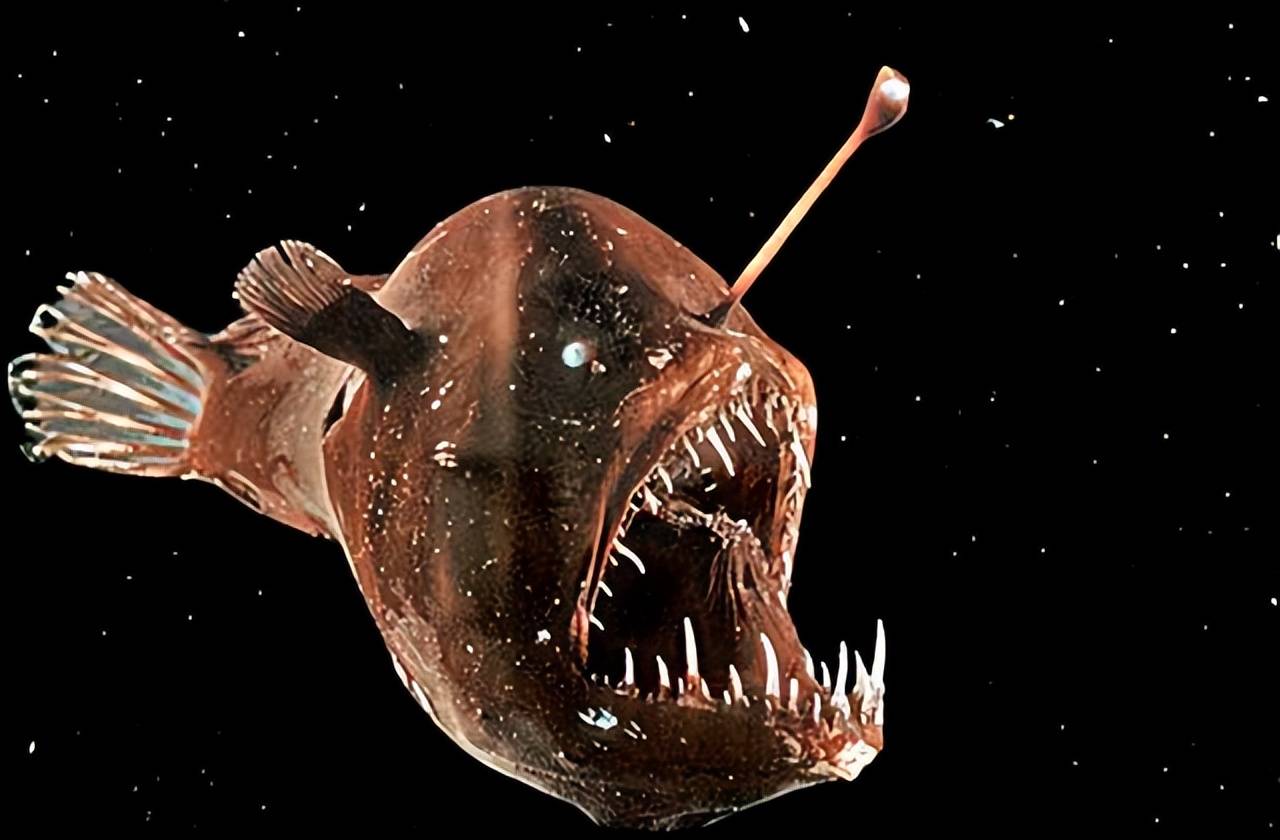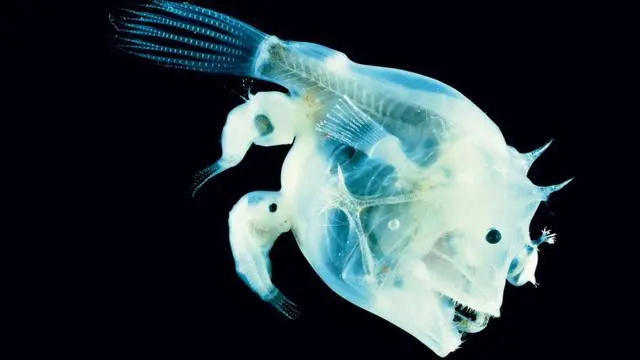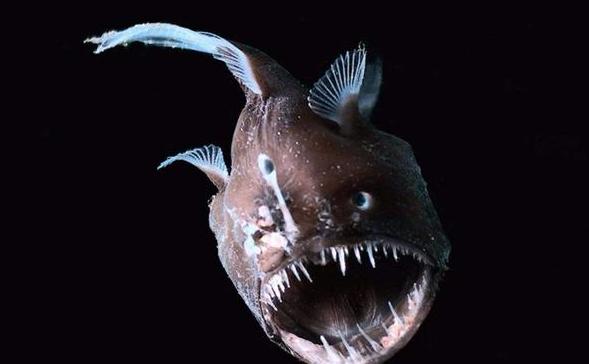
Alias anglerfish,Monkfish, scale fish, toadfish, sea toad, anglerfish, stuttering fish, lantern fish, ugly woman fish
Family Lophiiformes Chordata Clupeocephala Ctenosquamata
length Females 1-1.2 meters, males 8-16 centimeters

Anglerfish (scientific name: Lophiiformes) Chinese pinyin: (ān kāng), commonly known as monkfish, scorpionfish, toadfish, sea toad, anglerfish, stuttering fish, lantern fish, ugly woman fish, etc., is a bony fish. It lives in waters 3 to 3,600 meters deep and is a carnivorous fish lurking on the seabed. The body length of female anglerfish can reach 1-1.2 meters, while the male anglerfish is only 8-16 centimeters long. The body size varies greatly. The body is large and the appearance is strange. The head is large, the body is round and fat, there is a pair of big eyes and a big mouth. The eyes are almost useless. It is not good at swimming and mostly crawls on the pelvic fins. There are sharp and inward-slanting long teeth in the mouth. Basically, the prey bitten by it will never escape; and it has an elastic stomach, so some species can eat fish larger than themselves. The body is naked and scaleless, with cortical protrusions of varying sizes above the head and on the side edges of the body. The special thing is that the female fish has a luminous fishing rod evolved from the front dorsal fin, which is formed by the first dorsal fin of the anglerfish gradually extending upward. In biology, this luminous fishing rod is called a lure. There are millions of luminous bacteria at the top of the fishing rod, which looks like a small fish. The reason why it glows is that there are glandular cells in the lantern that can secrete photophores. Under the catalysis of photophorase, photophores react with oxygen to slowly chemically oxidize and emit light. It emits bright light and attracts small creatures to become their food. Its English name Anglerfish also comes from this.
The body is flat and soft. The head is large, wide and flat. The trunk is short. The mouth is wide and forward. The lower jaw is protruding, and the two jaws, vomer and palatine bones all have canines or sharp teeth of varying sizes, and they can fall inward. The gill openings are large, and the body is naked and scaleless. The periphery of the head has developed cortical tentacle-like protrusions. The first dorsal fin spine is separated, the first fin spine is located on the snout, with a leather spike-like snout tentacle at the end, and the second dorsal fin and anal fin are both located at the tail. The pectoral fins are well developed, with a long muscle handle. The pelvic fins are located at the throat. Because of its ugly body shape, it is called the ugly fish in Shandong. And because it sounds like an old man coughing, it is called the old man fish in the coastal areas of Hebei.
It is good at hiding, but not good at swimming. It adopts the hunting mode of "waiting for rabbits" on the seabed, and the "lantern" on its head is the capital for it to "wait for rabbits". Simply put, the lantern is the bait used by the anglerfish for predation. Whenever a small fish swims near the light point, the anglerfish will shake its fishing gear to lure the fish to the hook, and will use the pressure in the throat to agitate the water flow, thereby sucking the food into the mouth, which is not available in other fish, and has a high efficiency in snatching food.
Distribution range
Anglerfish live in the bottom of the sea, widely distributed in the Indian Ocean, Pacific Ocean and Atlantic Ocean, and also found in the Arctic Ocean and the coast of China.
Appearance characteristics
The ugliest one, it has a wide mouth, fine and sharp teeth, a rough body and black fins, it is the anglerfish.
Reproduction
In winter, the gonads begin to develop, and in spring, spawning is laid. During the reproduction process, the male anglerfish will choose to attach to the female to ensure survival and reproduction. Once this attachment relationship is formed, the male anglerfish will become part of the female body, realizing a unique reproduction strategy of eating "soft rice" to the extreme.
During the reproduction process, the male anglerfish will bite the gill cover of the female anglerfish, and then their skin tissues will gradually combine together, and even the blood vessels will be connected. After that, the blood vessels and muscles in their bodies will slowly blend together, and the small male fish can no longer be separated from the huge female fish, and it becomes a part of the female fish's body. The so-called love that never separates is probably about this kind of animal. This magical mating method actually requires the sacrifice of immunity to proceed, and the combination makes the male anglerfish completely dependent on the female to provide nutrients for survival.
During mating, the female fish will deliver nutrients and hormones to the male fish, stimulating the male fish to discharge sperm at the same time as ovulation, thus completing mating. Simply put, the male here is a tool specifically responsible for producing sperm, and some female anglerfish can even have many tool fish at the same time
After "melding" with the female fish, the male anglerfish itself will also change-except for the sperm vesicle, the other parts of the male fish will gradually degenerate and disappear. In order to maintain this dependent relationship, the male anglerfish will continue to provide reproductive cells for the female. Eventually it becomes a "sarcoma" on the female fish. At this time, the male fish can no longer be regarded as an individual to a certain extent, but can only be regarded as a sexual organ on the female fish. This unique reproductive strategy ensures that female anglerfish can obtain sufficient nutrition and also ensures the transmission of genes.
This reproductive strategy of anglerfish is a wonder of nature, showing the unique adaptation evolved by organisms for survival and reproduction. The attachment behavior of male anglerfish is not only a protection for females, but also an optimization of their own survival strategy. This strategy is particularly unique and effective in deep-sea environments. They move to shallow sea areas when spawning.

The fry of yellow anglerfish hatched from gelatinous eggs are translucent all over, with slender tips of dorsal and pectoral fins, and graceful and moving posture; the body color of yellow anglerfish fry gradually deepens, the tail fin and pectoral fins are very wide, and the dorsal fin spines are obvious, which is quite a bit like a military general. The fry continue to grow and gradually swim to the deep sea, and the "fishing rod" on the top of the head is also faintly visible. The growth rate is slow, generally taking 10-20 years to reach adulthood, and the lifespan can reach 60-100 years.
The star anglerfish will conduct one-to-one lifelong parasitism, while the spiny anglerfish, spiny-headed light stick fish, and royal tree barbel are one-to-many parasitism, that is, a female will have multiple "grooms". The others are fish species that do not have sexual parasitic behavior and can mate normally.

Main species
There are 4 genera and 25 species of anglerfish in the world. The production reached 94,200 tons in 1987. Among them, the anglerfish (Lophius piscatorius) has the highest production, 56,500 tons, distributed in the northeastern Atlantic Ocean. The main producing countries are France, Spain, the former Soviet Union, the United Kingdom, etc.; the American anglerfish (L.american) has a production of 11,100 tons, mainly caught in the United States; the South African anglerfish (L.upsicephalus) has a production of 8,958 tons, mainly produced in South
Africa. China only produces 3 species.
1. Yellow anglerfish (L.litulon): 1 to 2 rows of mandibular teeth, 8 to 11 anal fin rays, 6 first dorsal fin spines, black anal fin, and yellow front of the bottom of the mouth. It is distributed in the Yellow Sea, Bohai Sea and the northern East China Sea.
2. Black anglerfish (Lophiomus setigerus): 3 rows of mandibular teeth, 6 to 7 anal fin rays, 5 first dorsal fin spines, white anal fin, and black and white cross in the front of the bottom of the mouth. It is distributed in the East China Sea and the South China Sea.
3. Lophiodes abditus pinus: 3 spines on the first dorsal fin, well-developed shoulder spines, only distributed in the deep sea area above 600 meters in the South China Sea
It is known as "eating anglerfish in the east and pufferfish in the west". The meat of anglerfish is as dense as lobster, firm and not loose, full of elasticity, more delicious than ordinary fish, and rich in collagen. Their liver contains a lot of oil, which is rich in vitamin A and vitamin D. It is an extremely precious tonic and also has important value for scientific research. The liver of anglerfish tastes very delicious, so it is also called "foie gras in the sea".